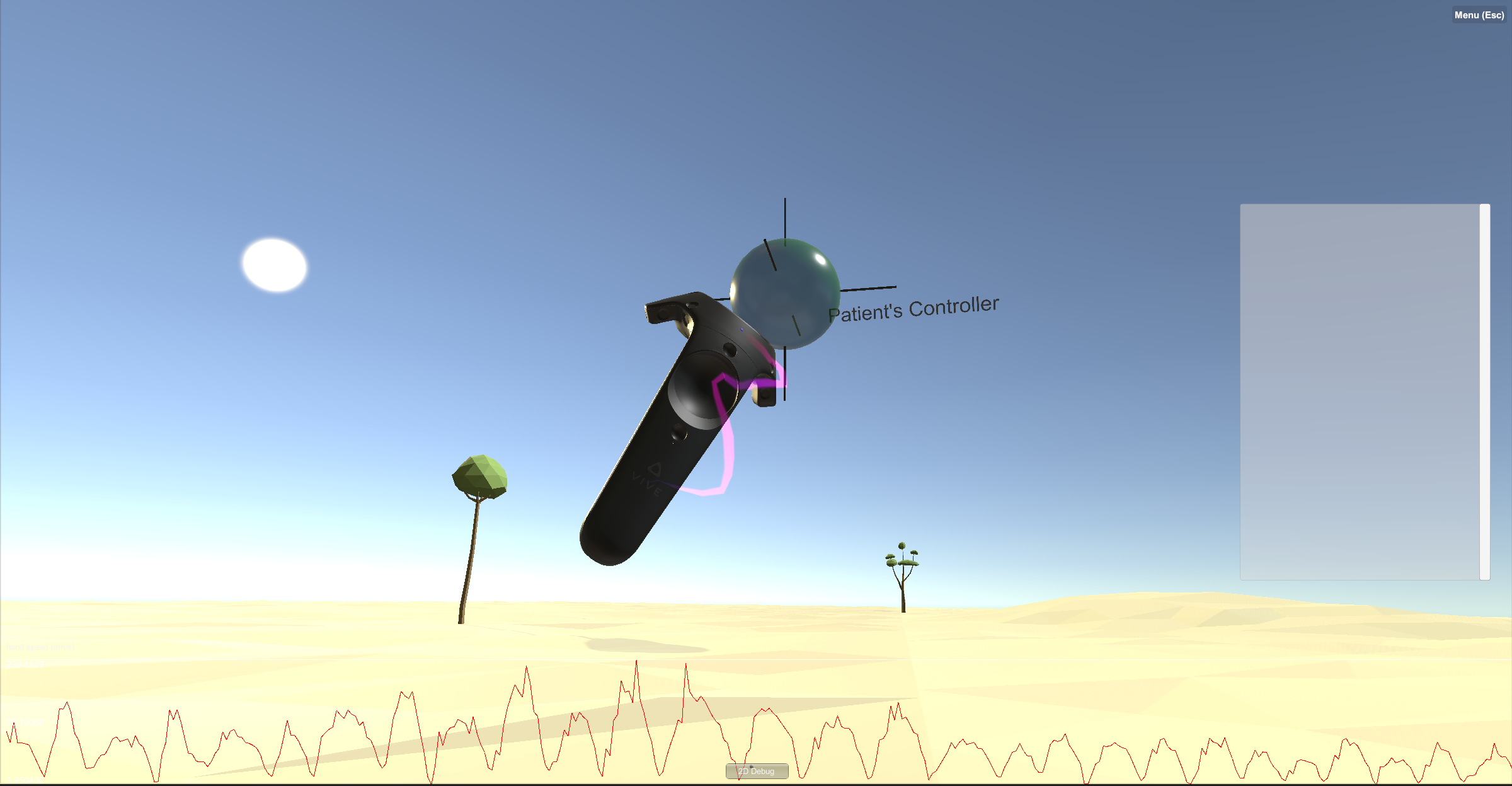The objective of our collaboration is to develop a virtual reality (VR) system to improve the diagnosis of movement disorders by enabling tests that cannot be conducted in the real world. Effective treatment of movement disorders requires the neurologist to discern between distinct diseases with very subtle differences in symptoms. Current clinical practice largely relies on visual observation of the patient attempting various tasks designed to invoke different aspects of their sensorimotor system. Conventional clinical assessments can successfully distinguish a particular patient's underlying pathology in many cases, but in many others no confident conclusion can be drawn. A major limitation is the inability to construct movement tasks that independently stimulate the sensorimotor systems of interest. VR removes many of the practical constraints of real-world motion tasks. We will develop a prototype system to demonstrate the following advantages: - The movement of the avatar limb may be modified with respect to the actual limb. For example, tremor (involuntary oscilllatory movements) may be reduced or amplified in the visualisations. This would allow the neurologist to explore whether visual feedback loops are involved in generating the tremor. - The patient can reach the target without bumping into it. Goal-directed movements are an important part of movement disorders assessments. For example, ‘intention tremor’ is identified based on whether it emerges as the patient’s fingertip approaches a target, e.g. within 10 cm. This period is extremely short in duration, especially in patients with jerky / abnormal movement, because once they touch the target the interaction forces will influence their movement. In VR, the subject could indefinitely hold their hand / finger in a precisely defined target envelope. - The precision required in a task can be smoothly varied by changing the dimensions of the target envelope. This would allow the neurologist to clearly distinguish between the postural and fine motor control elements of the task and their contribution to the movement disorder. - The position and speed of targets can be set in a precise, standardised way. - The intended pose can be communicated precisely and intuitively by superimposing a ghost avatar over the user’s avatar, so that discrepancies in specific body parts are clearly highlighted. This would help to prevent common practical challenges, such as consistently having to ask a subject to hold their elbow higher when touching their nose. The target pose may be predefined or controlled in real-time by the clinician while viewing the movement from the patient’s perspective. The same holds for floating targets, which may be controlled by the clinician’s hand movements. Hence the system will not impinge on a clinician’s ability to conduct their assessment in a responsive way. Although the relevance of VR to movement disorders has been recognised since the advent of the technology, its specialised use for upper limb assessments is a neglected area. Several commercial systems (MindMaze, Khymeia VRRS, Motek’s CAREN) have been developed to support rehabilitation, but they are not capable of the assessment-oriented features we propose above. They use large screens, rather than goggles, limiting the extent to which the user can be convinced to forget their real movements and feel ownership of the avatar’s. Only with recent advances in VR technology has it become practical to manipulate the visuomotor system in fine detail, as we propose. Academia similarly emphasises rehabilitation over diagnostic uses. Only one recent study [1] has focussed on upper limb assessments, and it uses Augmented Reality (AR) rather than VR; AR is not capable of completely obscuring the user’s actual arm movement as we intend. 

